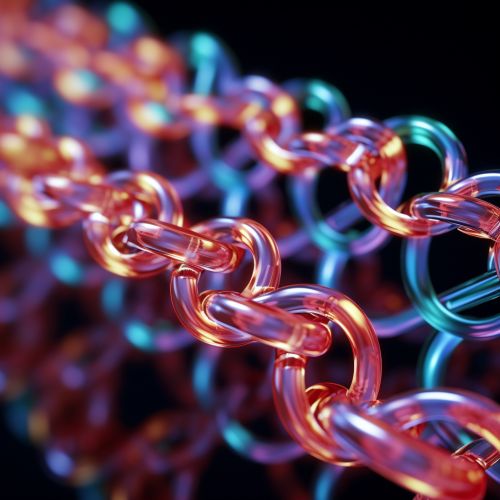Conjugated Polymer
Introduction
Conjugated polymers are a unique class of polymers characterized by a backbone chain of alternating single and double bonds. This alternating bond structure, also known as conjugation, allows for the delocalization of pi electrons across the entire polymer chain, leading to unique electronic and optical properties. These properties make conjugated polymers a key component in the field of organic electronics, with applications in devices such as organic light-emitting diodes (OLEDs), organic solar cells, and organic field-effect transistors (OFETs).


Structure and Properties
The structure of a conjugated polymer is defined by its alternating single and double bond backbone. This conjugation allows for the delocalization of pi electrons, which can move freely along the polymer chain. This electron mobility is responsible for the unique electronic and optical properties of conjugated polymers.
The electronic properties of conjugated polymers are largely determined by the energy gap between the highest occupied molecular orbital (HOMO) and the lowest unoccupied molecular orbital (LUMO). This energy gap, also known as the band gap, determines the electrical conductivity and optical absorption properties of the polymer.
The optical properties of conjugated polymers, such as their color and fluorescence, are also determined by the band gap. The energy of the absorbed light corresponds to the energy of the band gap, and the color of the emitted light is determined by the energy difference between the excited and ground states.
Synthesis
Conjugated polymers can be synthesized through a variety of methods, including polymerization of monomers with alternating single and double bonds, and post-polymerization modification of non-conjugated polymers. The choice of synthesis method can greatly influence the properties of the resulting polymer, including its molecular weight, degree of conjugation, and solubility.
Polymerization methods for conjugated polymers include electropolymerization, which involves the oxidation or reduction of monomers to form a polymer film on an electrode surface, and chemical vapor deposition (CVD), which involves the thermal decomposition of a monomer gas to form a polymer film on a substrate.
Post-polymerization modification methods include the dehydrogenation of saturated polymers to form conjugated polymers, and the doping of non-conjugated polymers with electron-accepting or electron-donating substances to induce conjugation.
Applications
Due to their unique electronic and optical properties, conjugated polymers have found a wide range of applications in the field of organic electronics. These include organic light-emitting diodes (OLEDs), organic solar cells, and organic field-effect transistors (OFETs).
In OLEDs, conjugated polymers are used as the emissive layer, which emits light when an electric current is applied. The color of the emitted light can be tuned by adjusting the band gap of the polymer.
In organic solar cells, conjugated polymers are used as the active layer, which absorbs sunlight and generates charge carriers. The efficiency of the solar cell can be improved by optimizing the band gap of the polymer to match the solar spectrum.
In OFETs, conjugated polymers are used as the semiconductor layer, which controls the flow of current in the transistor. The performance of the transistor can be enhanced by increasing the mobility of the polymer.
